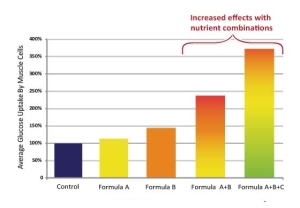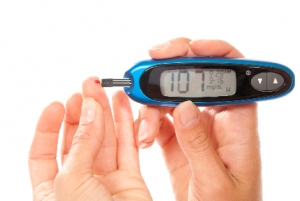Diabetes is the one of the fastest growing non-communicable diseases worldwide. It is associated with high blood sugar levels, which increases the risk of cardiovascular disease and kidney problems. It increases one’s risk of serious COVID-19 outcomes, as 40% of people who have died of COVID-19 also had diabetes. Currently, 1 in 11 adults in the world has diabetes, and it is estimated that by 2050 almost 1 in 3 people will have diabetes or pre-diabetes. More than 34 million Americans have diabetes and 7.5 million have pre-diabetes. With such staggering statistics, the National Institutes of Health (NIH) has declared November as Diabetes Awareness Month to prevent and effectively manage this disease.
During the current COVID-19 pandemic, we have learned that having diabetes significantly increases one’s chances of developing serious complications which could potentially be life-threatening. Although diabetes has increased globally, it has exponentially risen in the developing countries due to sedentary lifestyles, and fast food diets rich in artificial sugars and fat which can lead to obesity and other disorders. Obesity, high blood pressure, high cholesterol, and impaired glucose metabolism are now collectively called metabolic syndrome.
During the current coronavirus pandemic, diabetes has become a serious concern. People with type 1, type 2 and pregnancy-related (gestational) diabetes are at a higher risk of developing serious complications from COVID-19 which could potentially be life-threatening. Having diabetes reduces a person’s immunity and thereby increases the chances of contracting any viral or bacterial infection and having delayed recovery.
In the last issue of the Health Science News Page we described the causes and effects of diabetes in children. Typically, type 1 diabetes affects children. However, due to poor diet and increasing obesity, type 2 diabetes is becoming common in children. While insulin and metformin are the FDA approved drugs for diabetic children, many other drugs are also used that are not tested in the younger population and, other safer avenues of addressing diabetic-related health issues are not emphasized enough.
Diabetes is one of the most common non-communicable diseases worldwide. It is no longer a disease of the ageing population in developed countries. Diabetes or pre-diabetes is increasingly being diagnosed in the younger population everywhere and most markedly in developing countries. Diabetes has reached epidemic proportions worldwide and this disease is at the forefront of public health challenges the world faces this century. The number of people around the world living with diabetes has skyrocketed in the last few decades and 422 million people were diagnosed with diabetes in 2014.
Sugar is required for production of bioenergy and other metabolic processes taking place in our body cells. Though sugar is an important part of our diet, the simple fact is that our consumption of sugar largely exceeds our body’s metabolic needs. The modern diet contains approximately 50-80 grams of sugar and most of it is derived from fructose. Fructose is metabolized differently in the body than glucose is. Present in soft drinks and most types of processed food and sweets, the consequences of excessive fructose consumption are dangerous and it has been associated with an increase in diabetes, heart disease and many other health problems.
According to a recent study published in The Lancet medical journal, the number of people diagnosed with diabetes has increased four times in the past 35 years1. There were 108 million people diagnosed with diabetes in 1980 and 422 million in 2014. Based on this alarming statistical finding, the World Health Organization (WHO) selected diabetes as the theme for World Health Day 2016 in order to raise awareness and to prevent and effectively manage diabetes.






